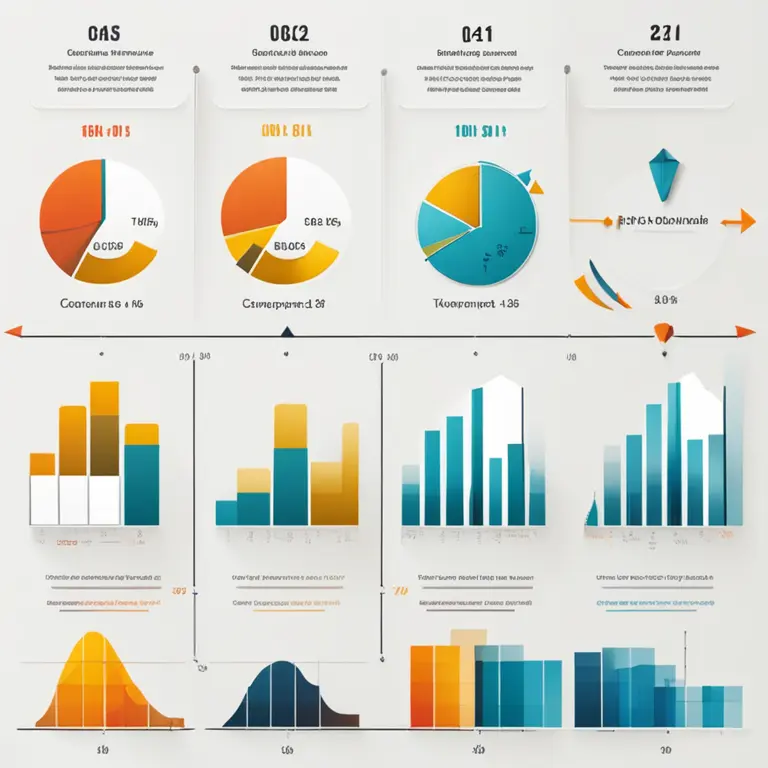
Mastering Biorhythm Analysis: A Step-by-Step Guide
Learn the fundamentals of biorhythm analysis and how to apply them to your daily life for enhanced well-being and decision-making.
article by Adrian Wallace
Introduction to Biorhythms
Biorhythms are believed to be the natural cycles that regulate various aspects of our lives, such as our physical state, emotional well-being, and intellectual abilities. These cycles start from the day we are born and continue to influence us throughout our lives. The concept, though without firm scientific support, has garnered interest for its potential personal insights. A basic comprehension of biorhythms can assist individuals in making better decisions and understanding their personal patterns.

Understanding the Three Cycles
The foundation of biorhythm theory rests upon three primary cycles: the physical, emotional, and intellectual. Each runs on a different cycle: the physical cycle takes 23 days, the emotional cycle 28 days, and the intellectual cycle lasts 33 days. By calculating these cycles, one can supposedly predict their peak and low periods, hence anticipating good or challenging days. To analyze biorhythms, you first need to identify where you are within each of these cycles.

Calculating Your Cycles
Calculations begin with your birth date. Various online calculators and software available in 2024 make this process simpler. Once you input your birth date, these tools will output graphs showing your biorhythm cycles for a selected period. These graphs plot the days on the horizontal axis and the biorhythm strength on the vertical axis, with a line representing the critical points or transition days.

Interpreting the Graphs
In biorhythm charts, a line crossing the middle signifies a transition from a high to a low phase, or vice versa. Days when the curve is above the midline suggest better-than-average conditions, while days below signify less favorable conditions. The precise days when the lines cross the middle are termed as 'critical days', which may imply heightened sensitivity or a need for caution in related activities.

Biorhythms and Decision Making
Some adherents of biorhythms use their analysis to inform their decisions, aligning demanding tasks with their predicted physical peaks or avoiding stressful situations during emotional lows. While scientific evidence supporting biorhythms' effectiveness is limited, some individuals report better outcomes when considering these cycles. It is essential, however, to use biorhythms as a supplementary tool and not a sole decision-maker.
Biorhythms in Personal Planning
You can potentially leverage biorhythm predictions to plan personal events or activities. For example, scheduling important meetings or activities during your intellectual high phases, or ensuring rest during physical lows. Although biorhythms are not empirically proven, those who practice it believe that it can lead to a harmonic alignment with one's natural rhythms.
The Skeptics' Viewpoint
Despite the interest, it's crucial to acknowledge that biorhythms are viewed skeptically by the scientific community. Critics argue that there is a lack of empirical evidence supporting the theory, and advise against relying heavily on these cycles. As with any non-scientific tool, users should apply their own judgement and consider biorhythms in the context of their overall lifestyle and decision-making processes.
Published: 1/30/2024
Modified: 1/30/2024
More predictions
Come back here soon to learn more about yourself and your future


Sync Your Cycles for Harmony With Biorhythms
Delve into the synchronization of personal biorhythms to enhance relationship compatibility and understand its role in fostering deeper connections.


Biorhythm Compatibility: Sync Your Cycles for Harmony
Discover the intriguing connection between biorhythms and relationship harmony. Learn how syncing your biological cycles can foster deeper compatibility.


A Guide to Biorhythms Journey
Embark on a journey of self-discovery through the science of biorhythms to optimize your life's potential.